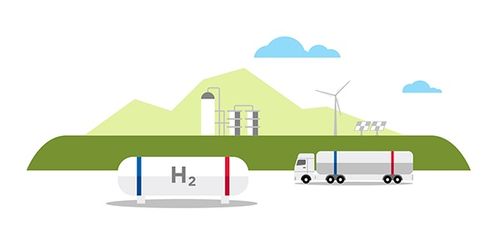TC Energy is evaluating 10 blue and green hydrogen hubs across North America, viewing incumbency as a significant competitive advantage.
The company is looking to use hydrogen as a means of providing a larger basket of low-carbon solutions to customers, according to Omar Khayum, a TC Energy vice president who is in charge of hydrogen project development. That basket includes mature power generation assets like wind, solar and pumped hydro, Khayum said in an interview, as well as additional firming resources, renewable natural gas, and carbon capture.
“We have a continental platform of customers that are in oil & gas and heavy industry that are looking to decarbonize their existing feedstock,” he said.
TC Energy is partnering with end-use customers, adding capabilities into the partnerships, and sharing in both the risk and benefit of the projects, he said.
“Our incumbency really allows us to partner with end users, and identify customer solutions,” Khayum said. “That’s our business model around de-risking what is a newer form of energy solution.”
Khayum declined to specify where the 10 hydrogen projects are located, other than to say they are proximate to industrial load – existing steelmaking, power plants, chemical facilities and refineries – and are not on the Gulf Coast. TC Energy has announced one project in Alberta which involves an evaluation of its Crossfield gas storage facility and would entail generating 60 tonnes of hydrogen per day with capacity potentially increasing to up to 150 tonnes per day.
In some cases, TC Energy is partnering with the end-use customer to jointly develop the hydrogen projects, Khayum said. “We are the lead developer in most cases but we’re not managing all of the risk ourselves – we’re putting together coalitions with organizations that have upstream and downstream capabilities to make sure we de-risk effectively.”
While conducting project management, TC will use external EPC firms and OEMs to deliver projects, depending on the location and technology in use, Khayum said.
Project funding
As for funding the projects, Khayum said the business model for hydrogen looks similar to the model for liquefied natural gas projects. “We have a wide degree of flexibility in how we can finance projects,” he said, noting the availability of project financing as well as the option to fund projects from TC Energy’s balance sheet.
“We have a number of financial advisors engaged to ensure that as we develop the projects from the offtake agreements to the supply chain agreements – and everywhere in between – those contracts are bankable to provide us the optionality to use project financing,” he said.
Khayum believes that the project finance market is still about 12 months away from being ready to finance hydrogen projects. “That’s because we are one of the early movers in hydrogen development and, as such, we’ll be bringing forward to the marketplace some of the first bankable offtake and supply chain contracts along with risk management tools and activities.”
He noted there was still work to be done among underwriters to validate those contracts for bankability. “We are working over the next year to not only get our projects to FID but working in tandem with our financial advisors to enable the banking system to accommodate those transactions.”
Much of the underwriting requirements have already been well-established in LNG, he noted. “If we can manage risk in a similar fashion,” he added, “we think it will be much more expeditious to achieving a positive FID.”






